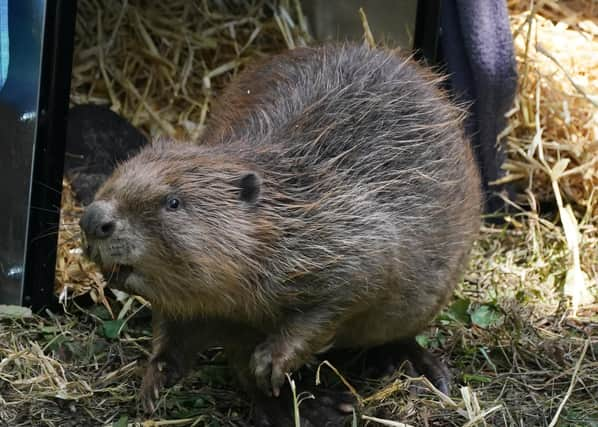Beaver families to be relocated to boost wild population in Scotland


NatureScot yesterday approved a licence application from Forestry and Land Scotland (FLS) to reinforce existing beaver populations on FLS land in Knapdale Forest in Argyll and Tay Forest Park, Tayside. The licence will permit the release of up to four families of beavers at sites where the species is not currently present but are close to established populations in the wider area.
The beavers will be trapped and taken under licence from areas where they are having a serious negative impact on agricultural land and where mitigation measures have not been successful or are not possible.
Advertisement
Hide AdAdvertisement
Hide AdThe FLS application was submitted in August and assessed by NatureScot in line with the Scottish Code for Conservation Translocations, which considers a range of issues including animal welfare, site suitability and potential impacts on neighbouring and community interests.
The proposed release sites were assessed as highly suitable, with a low risk of human conflict.
NatureScot concluded that releasing beavers in these locations would strengthen the local beaver populations and retain genetic diversity within the Scottish beaver population as well as providing local biodiversity benefits.
Donald Fraser, NatureScot Head of Wildlife Management, said: "Beavers are ecosystem engineers, creating habitats such as ponds and wetlands where other species thrive, as well as moderating water flows and improving water quality. In doing so, they play an important role in helping to restore biodiversity and respond to the climate emergency in Scotland.
"All of these sites are within the current beaver distribution range and have been assessed as highly suitable locations for beaver release.
"Beavers have been present in Knapdale Forest since the initial beaver reintroduction trial in 2009, and a small number of animals have also been present within Tay Forest Park for many years.
"We know that beavers can occasionally cause issues, and while we anticipate a low risk of conflict, NatureScot’s Beaver Mitigation Scheme will be available to assist land managers should any issues arise.
"Overall we consider that this reinforcement project will make a valuable contribution to delivering beaver restoration in Scotland as set out in Scotland’s Beaver Strategy."
Advertisement
Hide AdAdvertisement
Hide AdThe beavers will be trapped in line with best practice and undergo appropriate health screening before being released. Once widespread in Scotland, the Eurasian beaver was hunted to extinction 400 years ago, for its pelt, meat and musk oil.
A government-sanctioned trial reintroduction of beavers, at Knapdale in Argyll, began in 2009.In 2019 the Scottish Government granted beavers European protected species status. However, despite legal protection, over 200 of the animals were allowed to be killed under license in circumstances where they were having serious negative impacts on agricultural land. Following a change in approach to beaver management in 2021, the Scottish Government now actively supports relocations to suitable locations across Scotland.
Comments
Want to join the conversation? Please or to comment on this article.